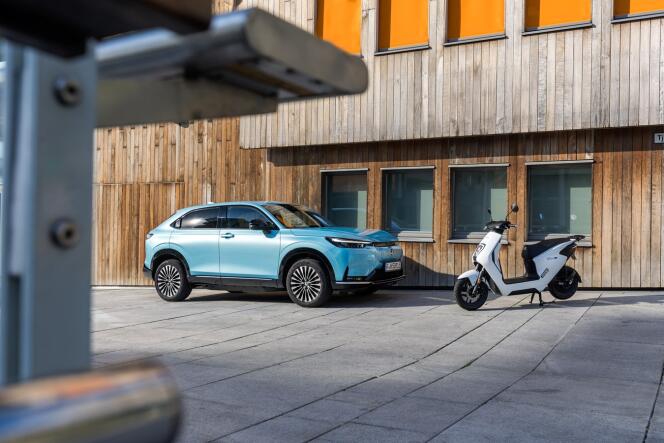Apart from electric, there is no salvation. This observation dictated by the acceleration of the energy transition applied to the automobile industry, the global success of Tesla and the arrival of Chinese competition has ended up becoming the credo of Honda and all Japanese manufacturers. Apart from Nissan, a pioneer of the genre, but which is slow to renew its catalog, Japanese brands have long considered that the future lies in hybrids while waiting for the fuel cell powered by hydrogen to take over. This strategic vision is now clearly invalidated, and Honda, like Toyota-Lexus, Mazda or Suzuki, must work without delay to make up for lost time.
A bit crazy, the very original Honda e – a neo-retro and overpriced mini-urban – suggested that the brand was not quite taking the electric car seriously. Now, the time has come to build a real range, but this conversion is being carried out with enthusiasm that we would describe as moderate.
For the Japanese, when it comes to electric cars, everything becomes complicated. This is evidenced by the frankly hermetic name inherited by Honda’s new SUV called “e:Ny1” (pronounced “anyone”, literally “everyone”, in English). The Toyota bZ4X reflects a similar lack of spontaneity in the choice of name, revealing an equally palpable lack of enthusiasm.
A relative lack of personality
Produced in China on an entirely new platform, the e:Ny1 could have laid the foundations for a renewed design, an expression of the rising generation of electric Hondas. The brand, undoubtedly pressed for time, preferred to renew the lines of the HR-V – a classic SUV with fluid lines, but whose style is in no way innovative – refusing to take advantage of the gain in habitability offered by a vehicle without a bulky thermal engine. The e:Ny1 remains very roomy, but that’s the least you can do for a 4.39 meter long vehicle.
In the cabin, Honda has installed a large 15-inch touch screen partially occupied by the air conditioning controls with a digital interface that is sometimes confusing and not particularly avant-garde. The general presentation is very “old world”, but it nonetheless remains excellent. Loaded with a usable 61.9 kWh battery (the nominal capacity is 68.8 kWh), this SUV, by definition hardly aerodynamic, offers an approved range of 412 kilometers, which places it in the average range.
You have 45.92% of this article left to read. The rest is reserved for subscribers.
